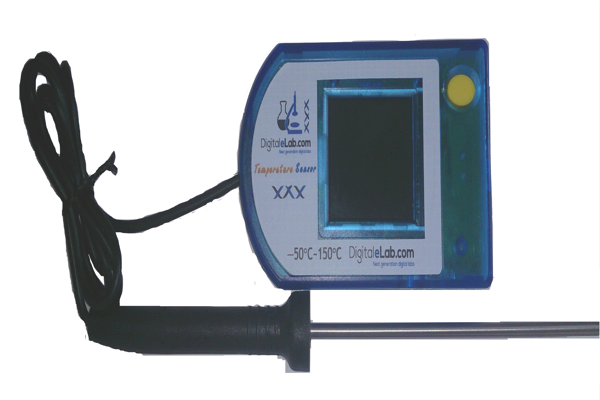
Temperature Sensor
Description:
The temperature sensor uses the stainless steel resistance as the sensitive component, so its resistance varies with the change of metal’s temperature.
Its stainless steel probe is more durable than a glass thermometer. The stainless steel is corrosion-proof and chemical corrosion proof, suitable for the temperature measurement of chemical, biological and physical experiments. Its fast response rate means student spends more time analysing data and less time waiting for results. The temperature sensor's wide range (–50 °C to +150 °C ) covers the majority of temperature experiments in the student lab. When power is switched on, the free electron in metal accelerates under the electric field, and then hit the nucleus that is of heat vibration in metal, which forms the resistance. When temperature rises, the heat vibration of nucleus will enhance, the hit between the free electron and the nucleus becomes frequent and resistance will increase too. Under a certain temperature range, the change of resistance has a linear relationship with the change of temperature. Therefore, it is popular for the measurement under the moderate temperature. Meanwhile, the stainless steel resistance shows high stability when measuring temperature.
Typical Experiment:
Explore phenomenon of heat conduction.
Explore the relevance of liquid evaporation and temperature.
Explore the relevance of friction work and temperature.
Explore the phenomenon of water ebullition.
Specification:
Range: -50°C ~ +150°C
Resolution: 0.05°C
Precision: 0.01°C
Dia.3mm stainless steel probe to measure the temperature of different object and solution.
